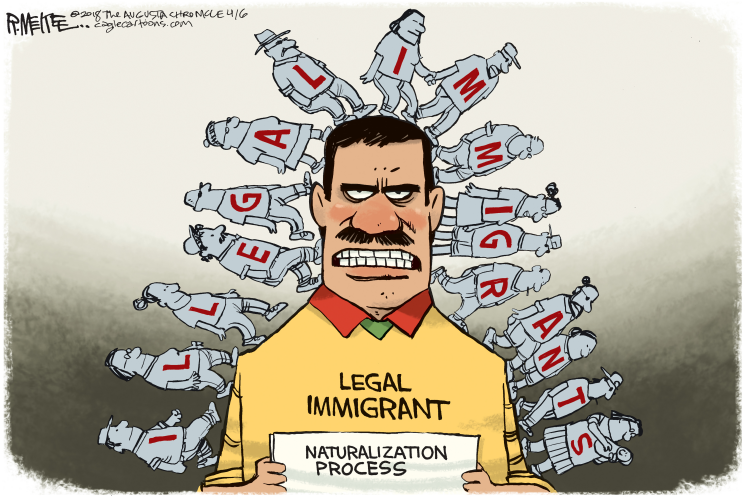
By Joe Guzzardi
Weeks ago, a 1,500-strong caravan of Central American migrants headed north. Along the way, partly in reaction to President Trump’s decision to send the National Guard to the border, the group splintered. But a small handful proceeded to Tijuana where they hope to begin the asylum process. According to Juventud 2000, hundreds more asylum seekers are on the way. But, earlier this week, Homeland Security Secretary Kirstjen Nielsen pledged that border jumpers would be prosecuted, and that she would order legal teams to the Southwest to adjudicate amnesty claims on the spot.
Asylum is a two-fold problem. First, the existing asylum process is particularly vulnerable to fraud. A New York Times story, “Asylum Fraud in Chinatown: An Industry of Lies,” provided the details of commonly used, but deceitful techniques. And in Queens, N.Y., an immigration lawyer pleaded guilty to essentially cutting and pasting identical false statements into his clients’ amnesty applications. Second, Congress has done nothing to restore integrity to the flawed process.
As with most immigration complications, amnesty fraud could be minimized by enforcing existing law. According to countless media reports, Central American families and unaccompanied minors qualify for amnesty pursuant to the 2008 Trafficking Victims Reauthorization Act. The very wording of the act’s name, “trafficking victims,” implies that many amnesty seekers don’t qualify. The caravan was organized by the San Diego-based, pro-immigration Juventud 2000. Central Americans who boarded the caravan did so voluntarily, and were not in any way trafficked, a crime that involves coercion and is normally associated with bringing minors to the U.S. for sex slavery.
Moreover, even a credible fear defense may not reach amnesty’s qualifying level. The Migration Policy Institute, an immigration advocacy organization, concluded that “being forced to join a gang or experiencing violence do not generally qualify as a basis for refugee status [amnesty] or fall readily into one of the refugee definition categories.”
Asylum seekers are skilled in gaming the U.S.’s toothless amnesty loopholes. Once across the U.S./Mexico border, they turn themselves in to an immigration official, request asylum and then disappear into the interior. With the backlog already at 300,000, new petitions hurt asylum seekers already in the U.S. whose cases have been pending for years.
A humane option for Central American asylum seekers is to take refuge in a safe third country, possibly permanently but at a minimum while their application is reviewed. Along their way north, the Central Americans pass through Mexico, a democracy that offers migrants a healthy economy and a mutually shared language. The safe third country option helps weed out fraud. If an individual is truly fleeing fear of persecution, the most common claim asylum petitioners make, the first port in the storm should suffice.
But U.S. asylum process, although convoluted and tedious, is ultimately more rewarding both for the applicant and his extended family than staying in Mexico. If 150 days pass without a decision on an asylum request, the petitioner can apply for employment authorization. The successful petitioner can also bring his spouse and minor children to the U.S., and after a year, file for permanent residency which initiates chain migration. In the end, amnesty’s long-term effects include a looser labor market, higher population and increased pressure on social services like education and health care.
A compassionate but prudent approach to asylum that honors valid claims, but denies fraudulent appeals, best serves Americans’ interests.
–
Joe Guzzardi is a Progressives for Immigration Reform analyst. Contact him at [email protected].
,

Leave a Reply